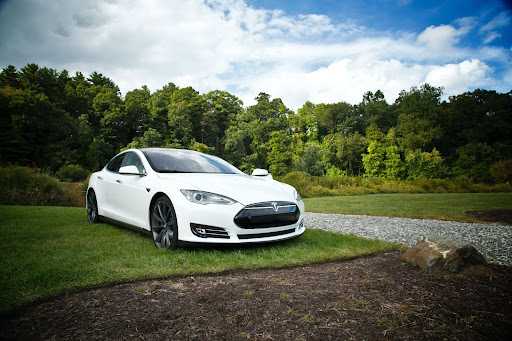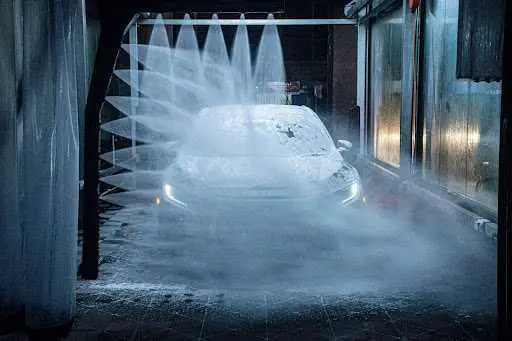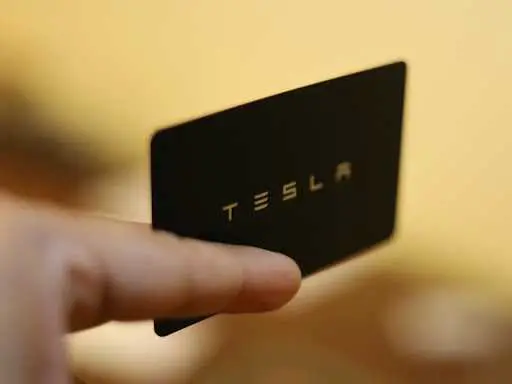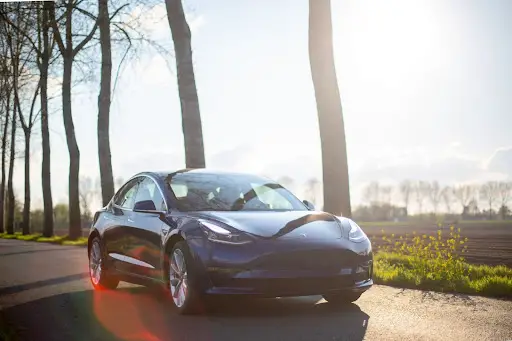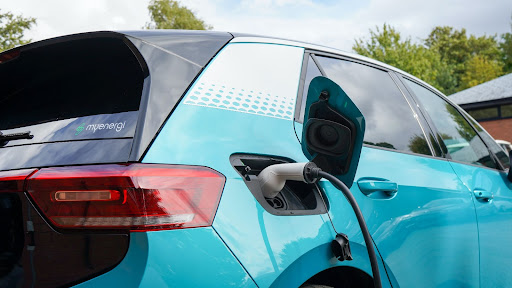Why Don’t Tesla Cars Have Engines?
Teslas and electric cars are getting more and more popular, and it seems they’re going to reign the world sooner or later. This popularity has good reasons, such as being eco-friendly, energy-efficient, and low-maintenance. As you may guess, they don’t have internal combustion engines for producing their required energy, but why?
Tesla cars don’t have engines because they’re electric vehicles running on their batteries’ electricity. Instead of internal combustion engines, they have electric motors that use electricity and turn it into mechanical energy that powers the wheels and helps the regenerative brakes.
If you’re wondering why Tesla cars don’t have engines, keep reading this article to learn more about it. We’ll tell you the difference between motor and engine, and see which one is used in Teslas. We’ll also take a look at other differences between regular cars and Teslas.
Table of Contents
- Engine VS Motor
- Does Tesla Have an Engine?
- Things a Tesla Doesn’t Have
- Things a Tesla Has
- Conclusion
Engine VS Motor
Most people use the terms “engine” and “motor” interchangeably, but they’re not the same. Let’s see how each one works.
Engines are used in regular cars, which are fuel-powered and run by combustion. The engine uses the provided energy to move the gears in transmission – it turns the heat energy into mechanical or kinetic energy. Then transmission transfers this energy to the wheels and moves the car forward.
On the other hand, we have the electric motor in electric cars, which doesn’t use any fossil fuel to combust. Electric motors use the electricity and turn that into the mechanical energy which is required for spinning wheels and propelling the car. There’s also a controller in such vehicles, which regulates the voltage that the motor receives.
While internal combustion engines have higher energy density – they produce more energy per fuel density – and refueling them takes much less time, they’ve got some disadvantages. Such engines emit many toxic emissions like carbon dioxide and damage the environment. Besides, they’re not as efficient as electric motors – they use much more energy for moving the vehicle.
On the contrary, electric motors are much cleaner and don’t emit harmful emissions. As mentioned, they use electricity, a clean source of power, and have no byproduct. Besides, they’re much more efficient and use less energy for propelling. What’s more, electric motors have instant torque, which means your car speeds up instantly when you hit the accelerator.
Does Tesla Have an Engine?
Tesla doesn’t have an engine; it’s an all-electric car which means it doesn’t use fossil fuels to provide its required energy. Instead, it has an electric motor that runs on electricity. Its electric motor is much cleaner and low-maintenance than internal combustion engines.
Teslas are electric cars and have electric motors, not engines. They don’t burn fossil fuels but use electricity to provide the required energy for propelling the vehicle. This energy comes from large lithium-ion battery packs, which have to be recharged after getting depleted.
The electric motor of Tesla cars is also very low-maintenance and can help you save up a lot of money and time. Its moving parts are much fewer than combustion engines (17 moving parts compared to around 200 ones in regular cars), leading to minor wear and tear among the motor components. That said, it also reduces – or even eliminates – the need for frequently changing car fluids or lubricating different parts.
Tesla’s motor is also highly energy-efficient; for example, the Model S is now around 90% efficient, leading to a better driving range. What’s more, such an engine is much quieter than an internal combustion engine.
In fact, electric motors are so quiet that even there’s a rule for them, called the “quiet car” rule, which requires them to make a sound at speeds up to 18.6 mph to warn the pedestrians and other vehicles that they’re approaching.
Things a Tesla Doesn’t Have
Teslas are one of the most advanced electric cars available in the market, and their difference from regular cars doesn’t end with the lack of an engine. Here we look at conventional car parts that are missing in a Tesla.
Transmission
Yes, Teslas don’t have a transmission – at least in its conventional sense – and it’s one of their most significant differences with regular cars. It only has a single-speed transmission that takes power from an electric motor and directly spins the wheels.
Lack of transmission has led to a much more spacious cabin and allowed the designers to freely play with it – that’s why we don’t see the big console of regular cars in the Tesla cars.
Multi-speed Gears
Related to the above, electric cars have only one gear – and one gear ratio. Their electric motor has an instant torque and a much larger RPM range than regular cars, which means they can reach the maximum torque at zero RPM.
So, Teslas don’t need to add extra different gears for accelerating because that would be just a burden with no proven benefits.
Clutch
Well, there would be no clutch when you don’t have multi-speed gears and a gearbox. Unlike the conventional combustion engine cars, electric cars like Tesla can speed up quickly without changing gears. So, having a clutch is literally irrelevant for them.
Engine Oil and Other Fluids
As we pointed earlier, Tesla doesn’t have an engine, and naturally, there’s no engine oil to be changed. The primary task of engine oil is to lubricate the moving metal parts that exist inside an engine.
Like what’s inside a Tesla, electric motors have much fewer moving parts than an engine, hence requiring less maintenance and lubrication. Tesla uses grease to lubricate the motor’s moving parts, and it would suffice for the car’s lifespan.
Besides, since there’s no combustion procedure to contaminate the oil or grease with its byproducts, it remains clean, and there’s no need to change it.
Note that Tesla doesn’t need engine oil, but it still requires lubricating oil. Plus, it needs oil in its differential or gear reduction box. What’s more, Teslas require lubrication for other external parts such as windows, doors hinges, etc.
In addition to the engine oil, Tesla cars don’t have fluids like radiator water or antifreeze. However, most of the fluids in a Tesla are sealed and cannot be accessed because it’s assumed that they would last for the car’s lifetime.
Fuel Additives and Filters
Fuel additives are chemical compounds added to the fuel tank to clean up the engine parts. However, since Teslas don’t use fossil fuels and run on electricity, you’ll never need to worry about them.
Besides, since Tesla is an electric car and doesn’t have an engine, it also lacks any air filter. Instead, it has air filters that prevent dust, dirt, and debris from entering the cabin. Replacing them every now and then will enhance the air quality of your Tesla’s cabin.
While Tesla recommends changing the air filter every two years – no matter how many miles you’ve driven – you can still change them more often but it’s not necessary, especially if you’ve got HEPA upgrades. It’s super easy and you can do it yourself.
Things a Tesla Has
In the previous section, we saw what things are missing in a Tesla; now, let’s go through the things that a Tesla has.
Regenerative Brakes
Regenerative brakes are a new technology used in electric cars such as Tesla. When you use the brake in a regular car, it uses energy to slow down and stop the vehicle. But a regenerative braking system somehow takes the wasted energy of the car while slowing down and sends it back to the batteries.
This process can improve the range, too. In fact, when it takes the kinetic energy of the car and turns it into electricity, it boosts the efficiency of the batteries.
Electric Battery Packs
Tesla and other electric cars don’t use regular batteries. Yes, Tesla has a 12v lead battery for emergency cases, too, but that’s not its primary power source. Tesla has large battery packs inside its floor, which are made of thousands of Lithium-ion cells with high efficiency.
Tesla’s lithium-ion batteries, produced in partnership with Panasonic, are so durable that even the company claims they’ll outlive the car itself. Besides, their arrangement inside the floor has created spacious rear and front trunks.
Infotainment Touchscreen and Updates
Tesla has a 17-inch touchscreen that, in addition to media, controls all other functions in the car. Tesla’s infotainment is much more complicated than simple touchscreens on regular cars, and some even compare it to a laptop on wheels.
While most car touchscreens are mainly used for navigation, Tesla’s infotainment touchscreen indicates all the superchargers in your vicinity, too. Besides, it shows other useful driving information like speed, range, warning, etc., and allows you to connect to the internet, stream media, play games, and use Autopilot.
Conclusion
Tesla is an electric car and uses electricity as its fuel. There’s no combustion and hence no engine. Tesla cars have an electric motor that’s clean, quiet, and highly efficient. Its moving parts are fewer than the internal combustion engines and are more low-maintenance. They also don’t have the engine oil and other fluids like radiator water.
Amazon and the Amazon logo are trademarks of Amazon.com, Inc, or its affiliates.

